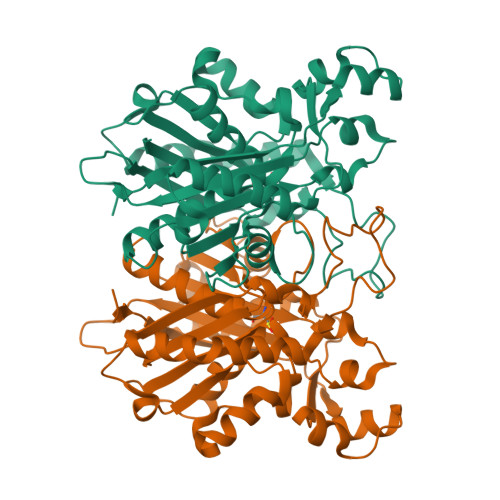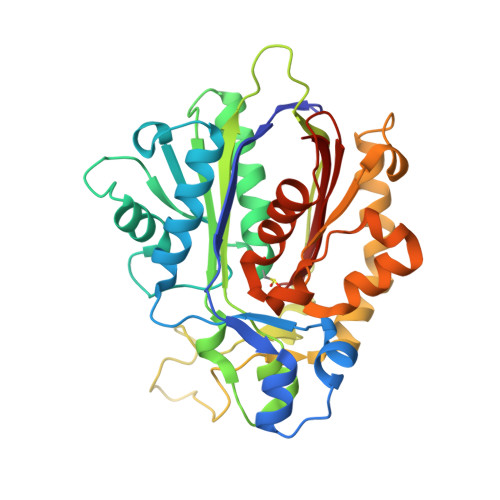Structural basis of head to head polyketide fusion by CorB.
Zocher, G., Vilstrup, J., Heine, D., Hallab, A., Goralski, E., Hertweck, C., Stahl, M., Schaberle, T.F., Stehle, T.(2015) Chem Sci 6: 6525-6536
- PubMed: 28757960
- DOI: https://doi.org/10.1039/c5sc02488a
- Primary Citation of Related Structures:
4YUC, 4YUF, 5C1J - PubMed Abstract:
Corallopyronin A is a polyketide derived from the myxobacterium Corallococcus coralloides with potent antibiotic features. The gene cluster responsible for the biosynthesis of corallopyronin A has been described recently, and it was proposed that CorB acts as a ketosynthase to interconnect two polyketide chains in a rare head-to-head condensation reaction. We determined the structure of CorB, the interconnecting polyketide synthase, to high resolution and found that CorB displays a thiolase fold. Site-directed mutagenesis showed that the catalytic triad consisting of a cysteine, a histidine and an asparagine is crucial for catalysis, and that this triad shares similarities with the triad found in HMG-CoA synthases. We synthesized a substrate mimic to derivatize purified CorB and confirmed substrate attachment by ESI-MS. Structural analysis of the complex yielded an electron density-based model for the polyketide chain and showed that the unusually wide, T-shaped active site is able to accommodate two polyketides simultaneously. Our structural analysis provides a platform for understanding the unusual head-to-head polyketide-interconnecting reaction catalyzed by CorB.
Organizational Affiliation:
Interfaculty Institute of Biochemistry , University Tübingen , Hoppe-Seyler-Str. 4 , 72076 Tübingen , Germany . Email: thilo.stehle@uni-tuebingen.de.

















